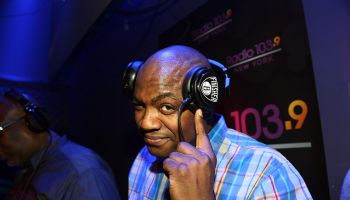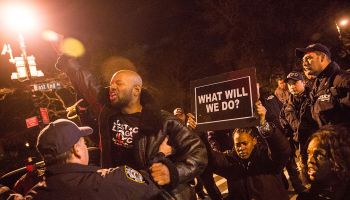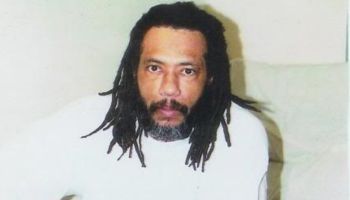When Barack Obama kicks off his flip-flops on the Martha’s Vineyard sand next month, he’ll be adding a modern note to the island’s black history that stretches back three centuries.
Decades ago, the island was a summer sanctuary for middle-class black families unwelcome elsewhere. Martin Luther King Jr. swam and wrote there.
Centuries before that, Martha’s Vineyard was home to blacks who defied the times to claim their place in island life.
One slave woman became a landowner. Her great-grandson was the island’s only black whaling captain. And a modest 20th-century innkeeper helped establish Martha’s Vineyard as a summertime haven for the middle- and upper-class blacks who are preparing to welcome the country’s first black president.
“There’s so much pride. That (Obama) family is like our family,” said Skip Finley, a radio executive and year-round Martha’s Vineyard resident.
Director Spike Lee, attorney and Clinton confidant Vernon Jordan and scholar Henry Louis Gates Jr. are a few of the prominent blacks who call Martha’s Vineyard home for at least part of each year.
To Harvard Law School professor Charles Ogletree, a friend of Obama’s and a regular summer visitor, coming to Martha’s Vineyard is a chance to do yoga at Inkwell Beach, fry some fish or loaf around in sandals past the gingerbread cottages without worrying that his skin color means anything at all.
“I have been escorted by Officer Friendly in many places to make sure I was going through, and not to, a community,” he said. “That doesn’t happen at Martha’s Vineyard.”
The island’s black history is isn’t entirely upbeat. Discrimination lasted long after slavery was gone. But the overall story is not just about persecution; it’s also about the “massive success” that followed for blacks on the island, says local historian Elaine Cawley Weintraub.
“In some ways, what happened here is sort of the American story: can do, will do,” she said.
Slaves probably lived on the island beginning around 1680, but the first known record of slavery is in the 1703 will of a man whose estate included “a Negro woman valued at 20 pounds.”
But slavery looked different in Massachusetts, partly because of a unique provision of the law that allowed slaves to inherit property. That enabled Rebecca Amos, a woman torn from her native Guinea, to become a landowner when her husband, a wealthy Wampanoag Indian, died in 1763.
Her great-grandson, William Martin, also married an Indian, and that couple two lived on a Chappaquiddick Island plantation that was considered Indian land. The plantation was plagued by poverty and high death rates, which one state report attributed partly to “the habits of intemperance and licentiousness which always … follow the contact of civilized and barbarous races.”
But Martin survived — and apparently thrived.
Working at sea was the primary way people of the plantation could earn a living, largely because whites were taking all the land, Weintraub said. Martin began his whaling career in 1853, and three decades later he had worked up to captain of an 86-ton whaling schooner, making him the island’s only black whaling captain. The dangerous, dirty work of whaling, which sent people to sea for months or years, probably helped ease racial barriers because competence was far more important than skin color, Weintraub said.
Such egalitarianism hadn’t taken hold in other areas of the island in 1912 when Charles Shearer built a summer inn on property he’d purchased from a Baptist campground.
Shearer was born into slavery in Virginia, before being freed by the Union Army, getting an education and moving north to the Boston area. A devout Baptist, he frequented a denominational campground in Oak Bluffs in the summers beforepurchasing a cottage. He and his wife later built a 12-room home on the property and opened Shearer Cottage, which catered to blacks when other establishments refused to host them.
The cottage became a center of a black summer population that grew over the decades and included actor Paul Robeson, singer Ethel Waters and U.S. Rep. Adam Clayton Powell Jr. of New York, who all stayed at Shearer Cottage.
In the 1960s, a home owned by New York political organizer Joe Overton hosted various black luminaries, including Martin Luther King Jr. Local rumor says King worked on his “I Have a Dream” speech between swimming sessions at a beach across the street, but Weintraub said there’s no way to know for sure.
Mildred Henderson, 84, a neighbor of Overton, said she recalls King sitting alone on the porch during the days and writing. To be on the island decades later when the nation’s first black president visits is remarkable, she said.
“There’s a beautiful connection,” she said. “I think it’s just wonderful that we’ve come this far.”
Notable as some visitors were, the less-known black professionals and their children vacationing on the island made the biggest impression on Bob Tankard when he first visited from New Jersey in the 1950s. Hanging around with the kids of black doctors, lawyers and politicians — many attending big-name schools — was a revelation, he said.
“When I came up for the summer of 1959, that was the first time that I had realized that blacks could be anything they wanted to be, other than an athlete and entertainer,” said Tankard, who is black.
Tankard moved to the island permanently at 15 — about 2.7 percent of the island’s year-round population of 15,500 is black — and later earned his doctorate in education and became a local principal and football coach.
Obama will be the third sitting president to visit the island, following Ulysses S. Grant and Bill Clinton, and it’s his third trip to Martha’s Vineyard. The island is buzzing about where he’ll stay, the sights he’ll see, the business he’ll bring.
But Ogletree said Obama is planning to make his mark on the island’s black history without doing much of anything at all.
“He found it a place where he could rest, recharge his batteries,” he said. “I think it’s exactly why he’ll come back again.”
















